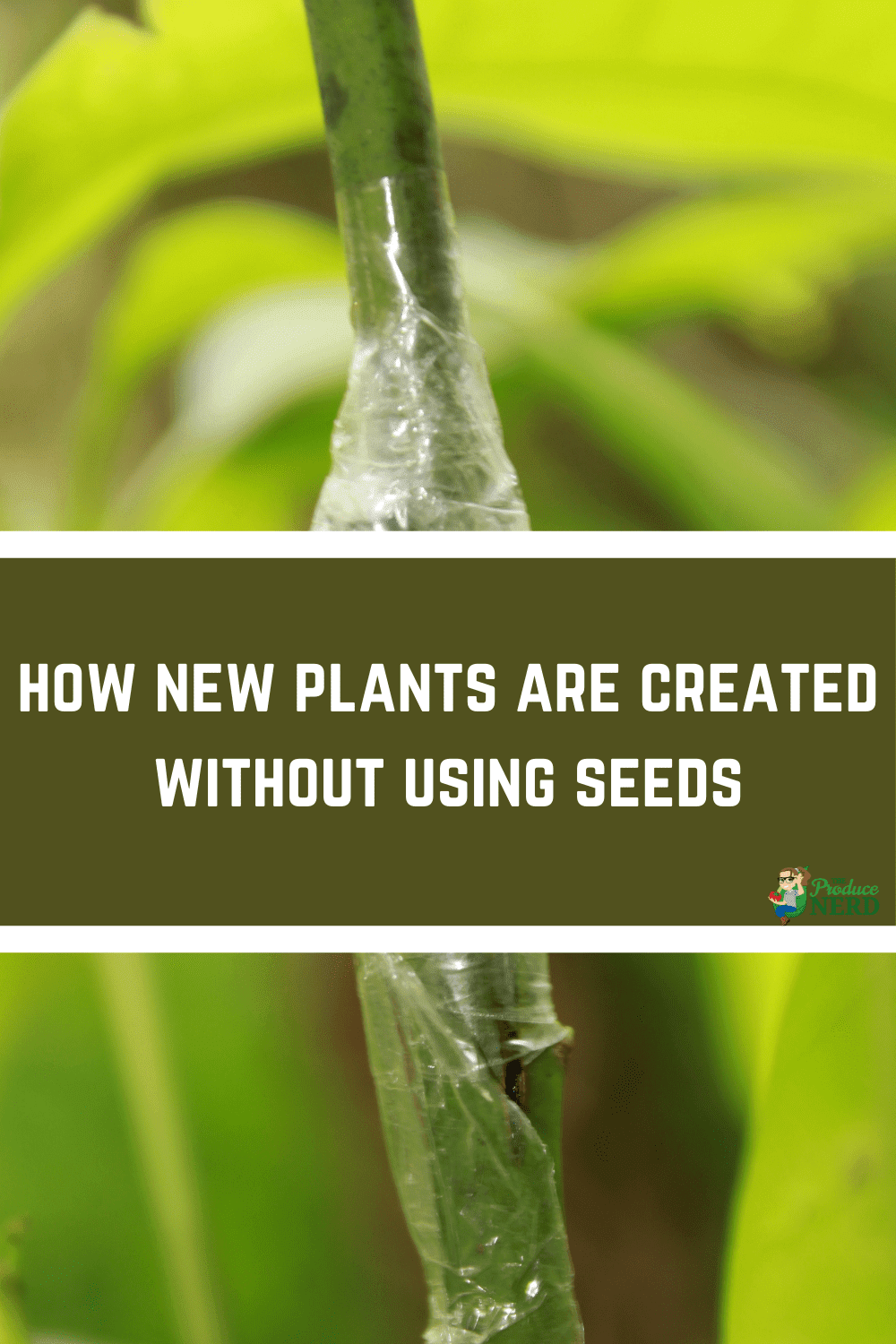Nowadays, using seeds to grow new plants via sexual propagation is not as popular as you might think. In order to get the desired cultivar, a lot of plants are asexually propagated, which means that they are created without going through the seed cycle (using the male and female flower parts). By using asexual propagation, there is greater uniformity and predictability for the grower.
Table of Contents
Main Types of Asexual Propagation
- Cuttings
- Grafting
- Micropropagation
Cuttings
Cuttings are when a vegetative plant part is removed from one plant (parent plant) in order to create a new plant (daughter plant). They can be taken from the stem (most common), the leaf or the root. When cuttings are taken, any flowers or flower buds are removed from the cutting to direct all of the plants energy into rooting. The cuttings can be placed directly into soil, a water medium, rooting hormone, etc. to get the roots to grow. Once the roots grow, you know that the cutting was successful.
An example of a crop where this is the main planting method is figs. The video below is a great example from Figaholics showing how to root fig cuttings.
Grafting
Grafting is when you take two separate plants and combine them to create your desired plant. The two separate plant parts are referred to as the rootstock (the plant used for the rooting system) and the scion (the plant used for the preferred foliage, flower or fruit). Grafting can be used to produce a dwarf version of a desired fruit, grow a desired fruit on a stronger rootstock, use a disease resistant rootstock, etc. Grafting is also used by home growers looking to produce more cultivars while using less space. Some examples are shown below.
The picture below is of a peach tree. Every silver tag represents a different type of peach or nectarine cultivar that has been grafted onto that same tree. If the grafts are successful, then the tree will have multiple cultivars of peaches and nectarines growing on it.
One of my favorite videos demonstrating grafting is from National Geographic (below). The video shows a tree that has been grafted with over 40 different stone fruit cultivars.
What is Needed for a Graft to be Successful?
In order for the two plant parts to combine successfully, they both need to be dicots and cultivars of the same species (e.g., a grape rootstock cannot be combined with a peach scion). Other factors include how compatible the two plant parts are and how close the cambium layers (plant tissue) fit together.
Micropropagation
The goal of micropropagation is to create an exponential amount of clones. In order to do this, a cutting of the plant is taken and sliced into multiple pieces (known as explants). The explants are then placed into a rooting medium with a plant growth regulator to root. After rooting, they are placed in soil in a controlled environment to acclimate before being sent to the nursery. This method is the most expensive method of asexual propagation, since it requires a sterile environment to be successful.
The video below shows a real-world example, where micropropation is used to create new banana plants.
Overview of Asexual Propagation
To see an overview of the different types of asexual propagation, click here to see a great video from Cornell University.
If you enjoyed this post, please share it!
Other posts that may be of interest:


I love your blog! Do you know which types of plants are more successful with cutting than others? Looking to propagate my cape gooseberry plant. Thanks!
Thanks, Jenn! Based on a quick search, I found that cape gooseberries do best when planted as seedlings, but you can also use the one-year old cuttings with a rooting hormone. You can find more information on it here: https://www.hort.purdue.edu/newcrop/morton/cape_gooseberry.html#Propagation